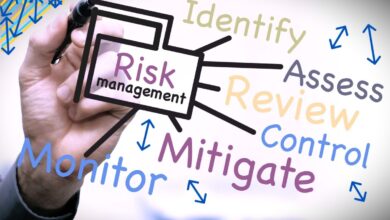Exploring the P/E/A/R Method: A Step-by-Step Approach to Effective Goal Setting
Exploring the P/E/A/R Method: A Step-by-Step Approach to Effective Goal Setting

Understanding the P/E/A/R Method
The P/E/A/R method is a framework designed to guide individuals in setting and achieving their goals effectively. It emphasizes the importance of purpose, execution, accountability, and review, providing a structured approach that increases the likelihood of success.
Step 1: Define your purpose
The first step in the P/E/A/R method is to define your purpose. This involves understanding the underlying motivation behind your goal. Ask yourself why this goal is important to you and what you hope to achieve by accomplishing it. Defining your purpose provides clarity and helps you stay focused during challenging times.
When defining your purpose, it’s essential to dig deep and tap into your core values and desires. Consider how this goal aligns with your long-term aspirations and how it contributes to your personal growth and fulfillment. By having a clear purpose, you’ll be more motivated and committed to taking the necessary steps to achieve your goal.
Step 2: Establish specific and measurable goals
Once you have defined your purpose, the next step is to establish specific and measurable goals. Vague goals are difficult to track and can easily lead to frustration and loss of motivation. By setting clear objectives, you create a roadmap that guides your actions and allows you to measure progress effectively.
When setting goals, it’s important to make them SMART: Specific, Measurable, Achievable, Relevant, and Time-bound. Specific goals define exactly what you want to achieve, while measurable goals allow you to track your progress. Achievable goals are realistic and within your reach, while relevant goals align with your purpose. Lastly, time-bound goals have a set deadline, providing a sense of urgency and focus.
By following the SMART framework, you can ensure that your goals are well-defined and attainable. This clarity will enable you to break down your goals into actionable steps and create a plan for execution.
Step 3: Identify actionable steps
Execution is a critical component of the P/E/A/R method. After establishing your goals, it’s essential to identify actionable steps that will move you closer to your desired outcome. These steps should be specific, practical, and achievable within a given timeframe.
Start by brainstorming all the tasks and actions required to achieve your goal. Then, organize these tasks into a logical sequence or timeline. Break them down into smaller, manageable steps that you can tackle one at a time. This approach prevents overwhelm and allows you to make steady progress towards your goal.
In addition to identifying actions, it’s crucial to allocate the necessary resources to support your journey. Determine what tools, skills, or knowledge you need to acquire and create a plan to obtain them. By being proactive in acquiring the resources you need, you set yourself up for success and minimize potential roadblocks.
Step 4: Review and revise your goals
Regularly reviewing your goals is a crucial aspect of the P/E/A/R method. It allows you to evaluate your progress, make necessary adjustments, and celebrate your achievements. Without review, goals can become stagnant, losing their relevance and impact.
Schedule regular check-ins with yourself to assess your progress. Reflect on what is working well and what needs improvement. Celebrate the milestones you have reached, no matter how small, and use them as motivation to continue pushing forward.
During the review process, be open to revising your goals if necessary. Sometimes, circumstances change, or new opportunities arise that may require adjustments to your original plan. By remaining flexible and adaptable, you can ensure that your goals continue to align with your purpose and aspirations.
Benefits of using the P/E/A/R method
The P/E/A/R method offers several benefits that contribute to effective goal setting and achievement. By incorporating purpose, execution, accountability, and review into your goal-setting process, you can experience the following advantages:
Clarity and focus
Defining your purpose provides clarity and focus on what truly matters to you. It helps you prioritize your goals and allocate your time and energy accordingly. With a clear purpose, you can avoid distractions and make decisions that align with your long-term vision.
Motivation and commitment
Understanding why your goal is important to you fuels motivation and commitment. When you have a deep emotional connection to your goals, you are more likely to persevere through challenges and setbacks. This intrinsic motivation keeps you engaged and committed to the journey.
Actionable plans
The P/E/A/R method emphasizes breaking down goals into actionable steps. This approach prevents overwhelm and provides a roadmap for success. By focusing on the specific tasks required to achieve your goal, you can make steady progress and maintain momentum.
Accountability and support
Sharing your goals with a trusted friend, mentor, or accountability partner adds an extra layer of motivation and support. When someone holds you accountable, you are less likely to veer off track or give up. Accountability provides external validation and encouragement, keeping you motivated and committed.
Flexibility and adaptation
Regularly reviewing your goals allows for flexibility and adaptation. As circumstances change, you can make necessary adjustments to ensure your goals remain relevant and aligned. This flexibility prevents stagnation and allows for continuous growth and improvement.
Examples of successful goal setting using the P/E/A/R method
To illustrate the effectiveness of the P/E/A/R method, let’s explore a few examples of individuals who have achieved significant goals using this approach.
Example 1: Sarah’s career transition
Sarah, a marketing professional, wanted to transition into a career in sustainable development. She used the P/E/A/R method to guide her goal-setting process. Sarah defined her purpose by reflecting on her passion for environmental conservation and her desire to make a positive impact. She then established specific and measurable goals, such as obtaining a master’s degree in sustainability and securing an internship in the field. Sarah identified actionable steps, including researching educational programs, networking with professionals in the industry, and updating her resume to highlight relevant skills. Through regular review and adjustment, Sarah successfully transitioned into her desired career path.
Example 2: John’s fitness journey
John, a sedentary individual looking to improve his health and fitness, applied the P/E/A/R method to set and achieve his goals. He defined his purpose by recognizing the importance of prioritizing his well-being and increasing his energy levels. John established specific and measurable goals, such as running a 5k race within six months and reducing his body fat percentage. He identified actionable steps, including joining a gym, hiring a personal trainer, and following a structured workout and nutrition plan. Regular review and adjustment allowed John to track his progress, modify his routines based on his body’s response, and eventually achieve his fitness goals.
Tools and resources for implementing the P/E/A/R method
Implementing the P/E/A/R method can be facilitated by various tools and resources available. Here are a few recommendations to support you in your goal-setting journey:
Goal-setting apps
There are several goal-setting apps available that can help you organize your goals, track your progress, and set reminders. Examples include Todoist, Trello, and Habitica. These apps offer features such as task management, habit tracking, and visual progress indicators.
Accountability partners or groups
Find an accountability partner or join a goal-setting group to share your goals, provide support, and hold each other accountable. These individuals or groups can be friends, family members, colleagues, or online communities. Regular check-ins and progress updates will keep you motivated and focused.
Journaling and reflection
Journaling can be a powerful tool for self-reflection and goal evaluation. Set aside time each day or week to write about your progress, challenges, and insights. Journal prompts can guide your reflections and help you gain deeper insights into your goals and motivations.
Conclusion
The P/E/A/R method offers a comprehensive and effective approach to goal setting. By incorporating purpose, execution, accountability, and review into your goal-setting process, you can increase your chances of success and lead a purpose-driven life. Remember, effective goal setting requires clarity, action, commitment, and adaptation. Embrace the P/E/A/R method, and watch your goals come to life. Say goodbye to stagnant goals and hello to a purpose-driven life.




One Comment